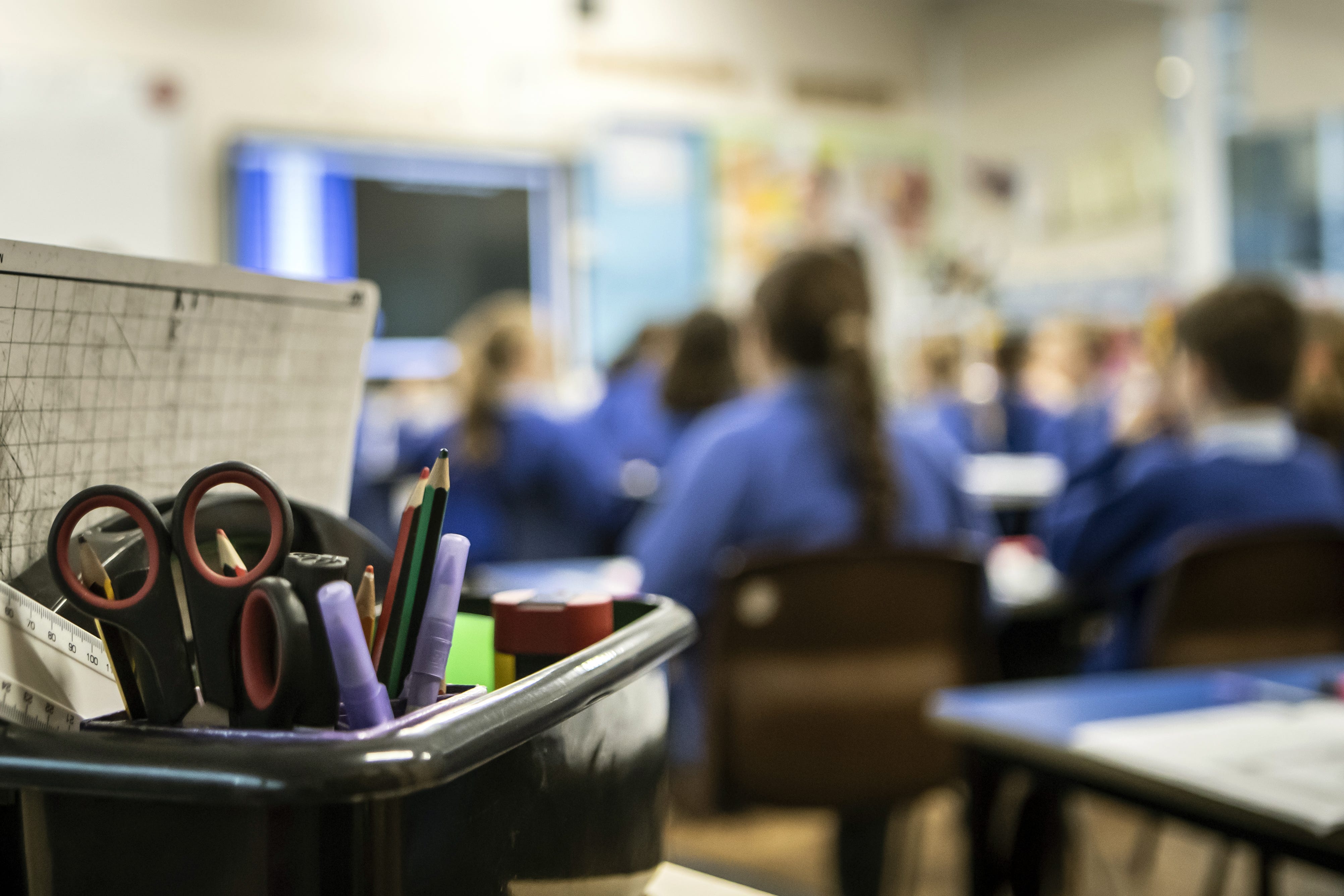Fall in pupil numbers not leading to smaller class sizes, report suggests
Larger reductions in primary pupil numbers were leading to more schools going into deficit, new research indicated.

Primary schools in England where pupil numbers have fallen sharply are not reducing class sizes, a report has suggested.
Schools are prioritising cutting the number of classes instead as they may face financial challenges when classes are not full, according to an analysis.
Research by the National Foundation for Educational Research (NFER) found that most regions in England have experienced falls in their primary pupil numbers between 2017/18 and 2023/24.
The evidence from the areas where pupil numbers have fallen the most suggests schools prioritise cutting the number of classes, instead of reducing the number of pupils in each class
But London largely accounts for the national fall by itself, and the 10 local authorities (LAs) with the biggest declines in state primary pupil numbers have all been in the capital, the report found.
Pupil numbers have fallen by about 50,000 in London, compared to 70,000 nationally.
A reduction in class sizes in primary schools as a result of falling pupil numbers “could help improve pupils’ outcomes”, the report said.
But the analysis concluded: “The evidence from the areas where pupil numbers have fallen the most suggests schools prioritise cutting the number of classes, instead of reducing the number of pupils in each class.
Primary schools in London have 50,000 less pupils than they did in 2017/18 and the areas with the largest falls have seen schools moving into deficits at a much faster rate than the national average
“This is likely to be due to the financial challenge schools face when some classes are not full/it is not operating at capacity.”
A population bulge in England has been moving from primary schools into secondary schools.
London councils warned last year that schools could be forced to merge or close as a result of falling pupil numbers and funding pressures.
The number of applications for places at primary schools in the capital fell last year due to the falling birth rate, as well as families leaving the city after the pandemic and Brexit, councils said.
The NFER analysis found that funding pressures have been “particularly acute” in the local authorities where pupil numbers have fallen fastest.
We would encourage the new government to see this as an opportunity not to reduce funding, but to invest in schools and their staff. This could include offering smaller classes and more targeted help for pupils who need it ...
The evidence from LAs in London suggests that larger falls in primary pupil numbers leads to more primary schools going into deficit, it added.
Michael Scott, senior economist at the NFER and blog co-author, said: “Pupil numbers are falling in primary schools and this can put serious pressure on schools’ finances, as our analysis shows.
“Primary schools in London have 50,000 less pupils than they did in 2017/18 and the areas with the largest falls have seen schools moving into deficits at a much faster rate than the national average.”
He added: “We know falling pupil numbers is a key issue facing the primary school system. (The Department for Education’s) latest pupil projections suggest numbers are going to continue to fall in future.
“Further work is urgently needed to understand how the Government, LAs and schools can respond to falling numbers to achieve the best outcomes for children everywhere.”
Paul Whiteman, general secretary of school leaders’ union the NAHT, said: “Falling pupil numbers and their impact on school finances are understandably a concern when funding is worked out on a per pupil basis, and budgets are already stretched.
The Government must take the opportunity of a fall in pupil numbers to reduce the size of classes in English schools. Class sizes have grown substantially since 2010 and England now has more than one million pupils taught in classes over 30
“We would encourage the new government to see this as an opportunity not to reduce funding, but to invest in schools and their staff.
“This could include offering smaller classes and more targeted help for pupils who need it, maintaining existing staffing levels, and cutting intolerable levels of workload for teachers and school leaders at a time when the profession is facing a huge recruitment and retention crisis.”
Daniel Kebede, general secretary of the National Education Union (NEU), called on Labour to introduce a mechanism to plan school places for a local area to reduce school closures.
He said: “The Government must take the opportunity of a fall in pupil numbers to reduce the size of classes in English schools.
“Class sizes have grown substantially since 2010 and England now has more than one million pupils taught in classes over 30.”
He added: “Smaller classes would give pupils more access to their teachers, and this has a particularly big impact on pupils from disadvantaged backgrounds.
“Since the pandemic, the gap in achievement between disadvantaged pupils and their more privileged peers has grown.”
A Department for Education spokesperson said: “We recognise the challenges that schools are facing, which is why the Education Secretary has committed to resetting the relationship with the sector and working alongside them to break down barriers to opportunity for all our children.”
Bookmark popover
Removed from bookmarks